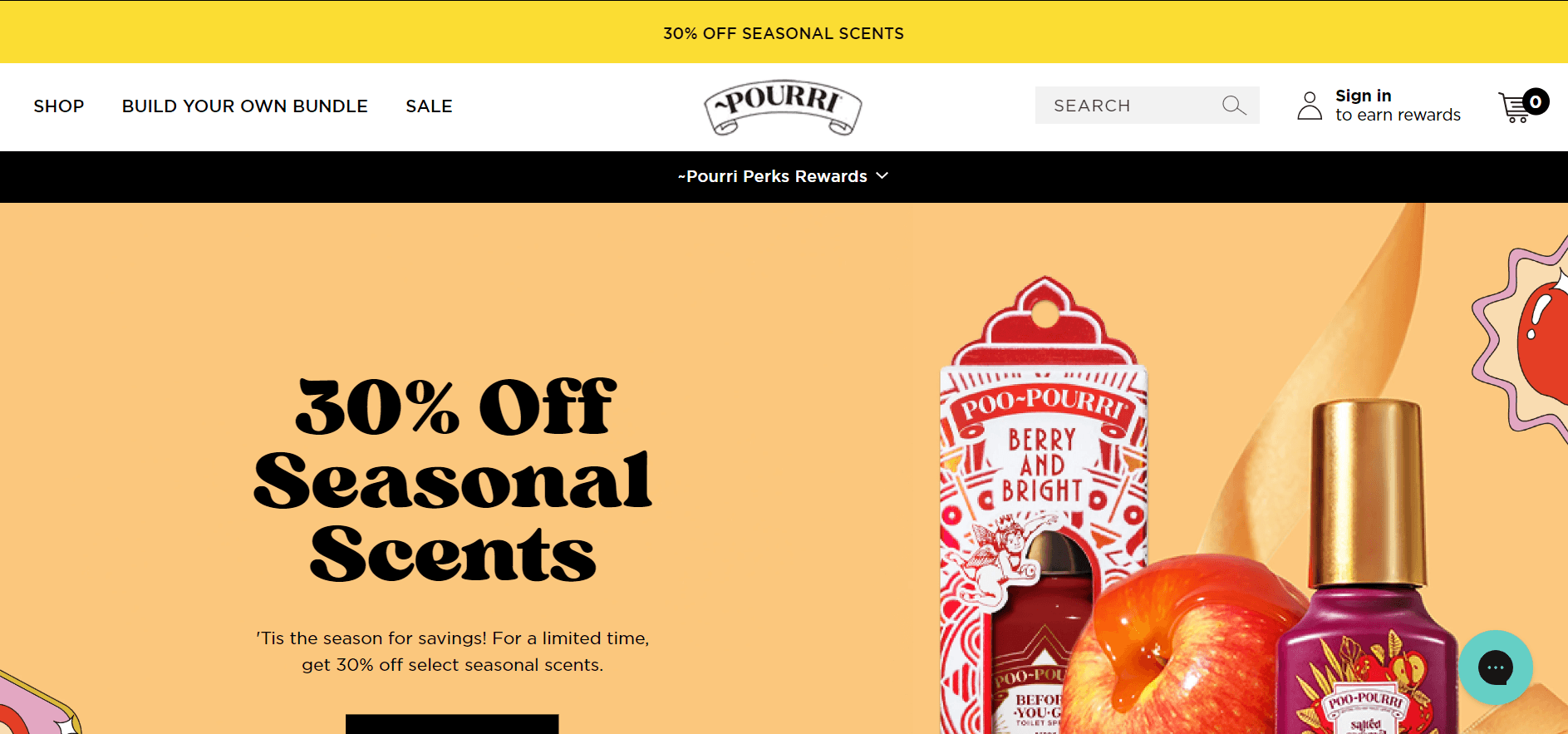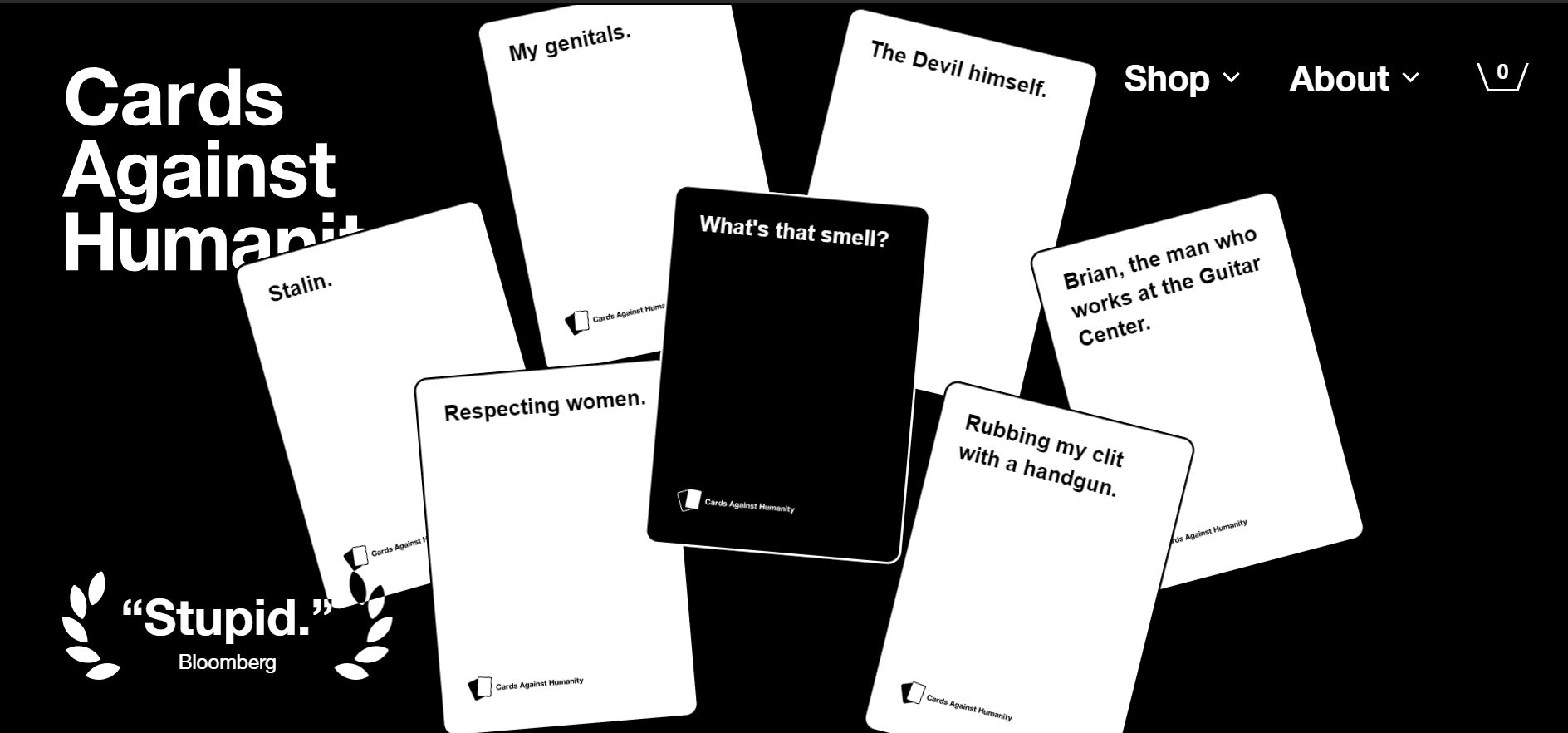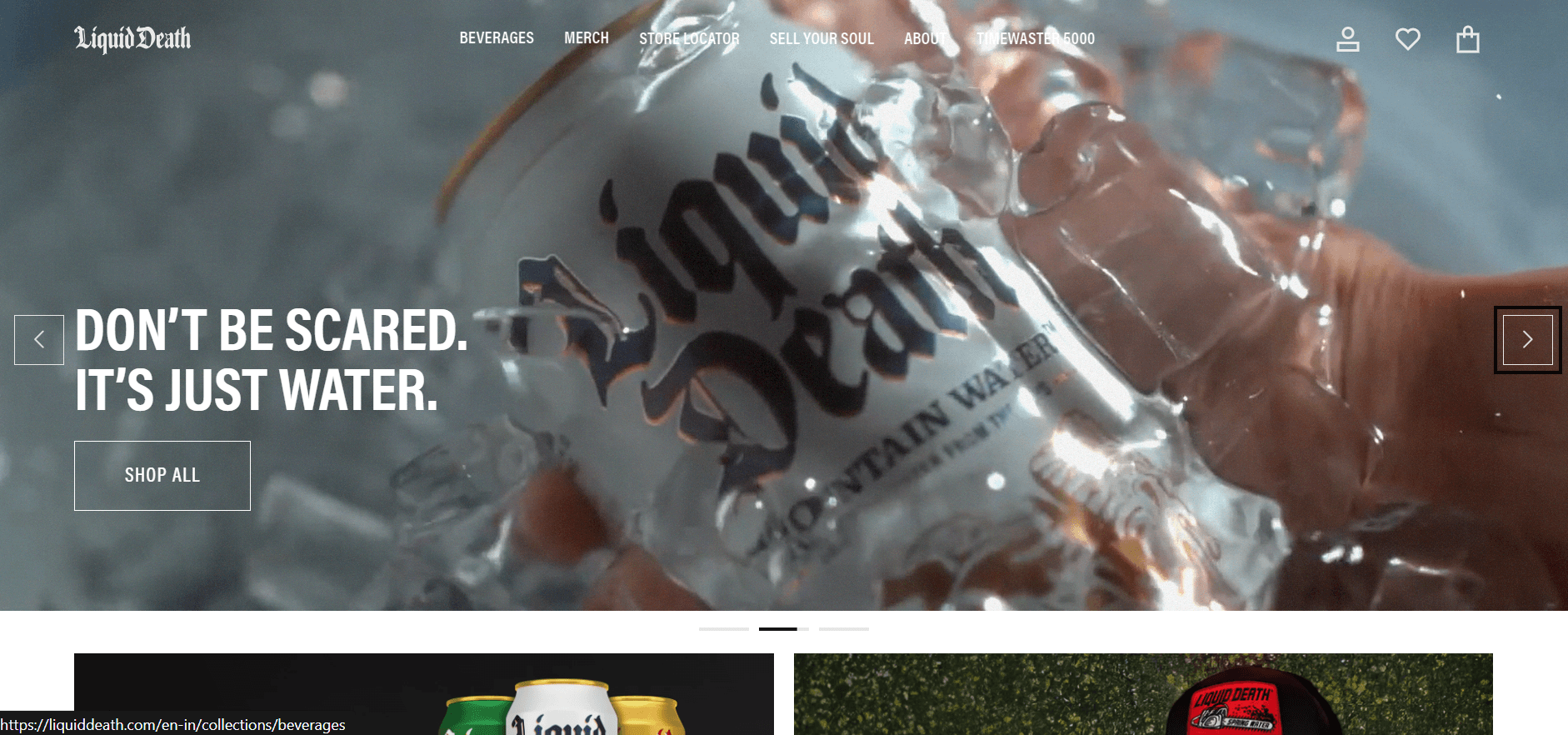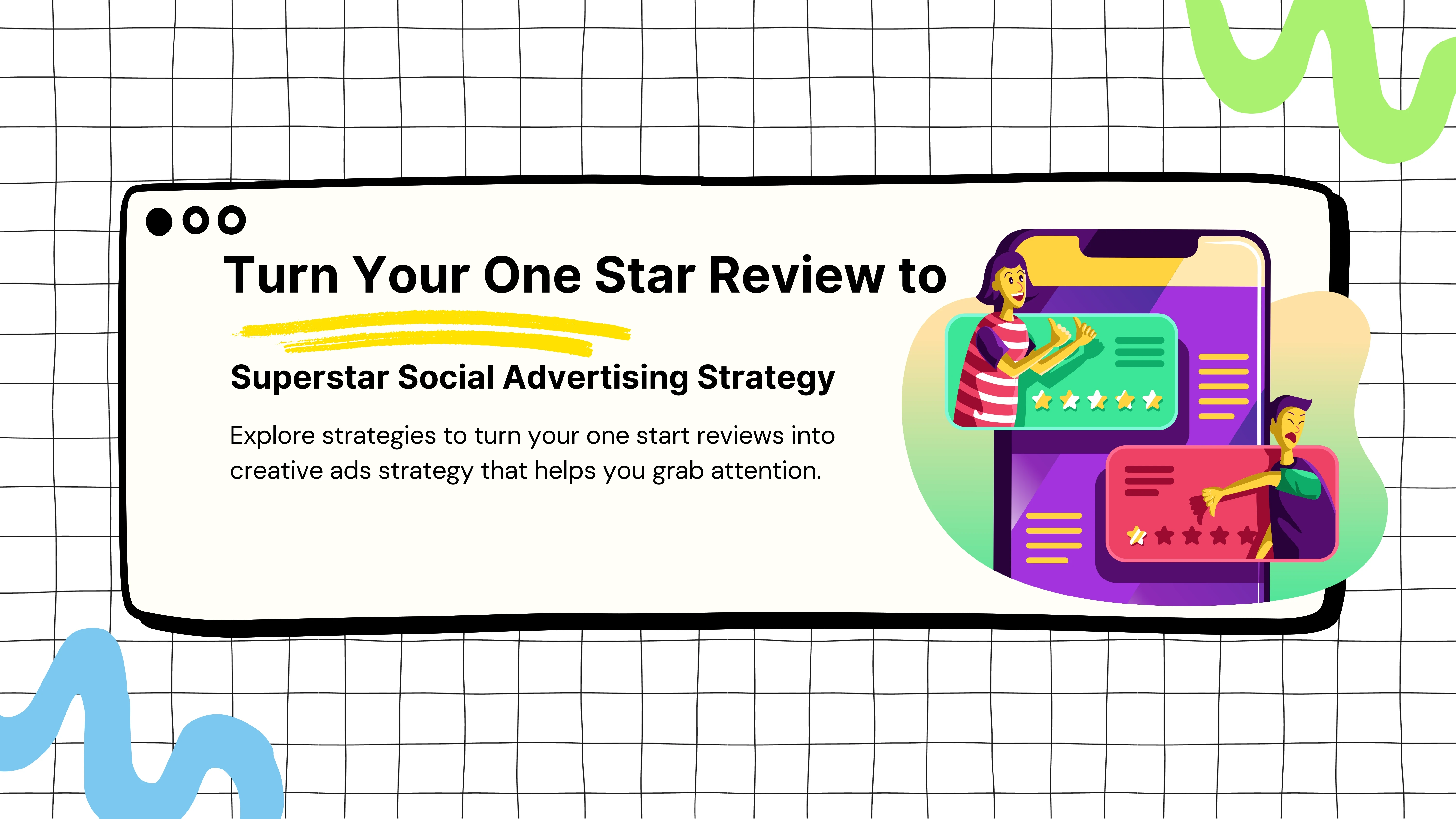How One-Star Reviews Can Boost Your Brand's Success
How One-Star Reviews Can Boost Your Brand's Success
Getting Started
From One-Star to Superstar: How Negative Reviews Can Boost Your Brand's Success
From One-Star to Superstar: How Negative Reviews Can Boost Your Brand's Success
In the age of hyper-curated content and glossy marketing campaigns, authenticity is a sought-after yet elusive currency. Brands are constantly looking for ways to connect with their audience on a real, human level—a feat easier said than done. One unconventional and brilliant strategy has been making waves in recent years: using one-star reviews as the headline in ad campaigns. What may initially seem counterintuitive turns out to be an incredible opportunity to build trust, infuse humor, and differentiate your brand from competitors.
This strategy relies on turning an apparent flaw into a strength, demonstrating transparency, humor, and relatability. Brands like Poo-Pourri, Cards Against Humanity, Liquid Death, and BarkBox have effectively used one-star reviews to build their brand identity, connect with their audience, and drive engagement. In this blog, we'll explore why this strategy works, look at real-world examples, and provide guidance on how you can implement it effectively for your brand.
In the age of hyper-curated content and glossy marketing campaigns, authenticity is a sought-after yet elusive currency. Brands are constantly looking for ways to connect with their audience on a real, human level—a feat easier said than done. One unconventional and brilliant strategy has been making waves in recent years: using one-star reviews as the headline in ad campaigns. What may initially seem counterintuitive turns out to be an incredible opportunity to build trust, infuse humor, and differentiate your brand from competitors.
This strategy relies on turning an apparent flaw into a strength, demonstrating transparency, humor, and relatability. Brands like Poo-Pourri, Cards Against Humanity, Liquid Death, and BarkBox have effectively used one-star reviews to build their brand identity, connect with their audience, and drive engagement. In this blog, we'll explore why this strategy works, look at real-world examples, and provide guidance on how you can implement it effectively for your brand.
The Psychology Behind the One-Star Review Strategy
The Psychology Behind the One-Star Review Strategy
The genius behind using one-star reviews in ads lies in the psychology of authenticity and relatability. Consumers today have become savvy—they know when they are being sold to and often mistrust marketing that seems too good to be true. Featuring negative reviews openly allows brands to establish transparency, conveying that they are comfortable with their imperfections. In fact, this honesty can even make your brand's positive aspects shine brighter.
1. Authenticity Builds Trust
A key reason this strategy works is the value consumers place on authenticity. According to a study by Stackla, 86% of consumers say authenticity is important when deciding what brands they like and support. Showcasing your flaws—whether they are actual product limitations or humorous anecdotes—allows potential customers to relate more deeply. It's a refreshing shift from the perfectly polished content consumers have grown tired of seeing.
2. Humor Creates Emotional Connections
Humor is another powerful element at play here. Negative reviews often introduce humor, turning an obvious flaw into something that brings laughter or light-heartedness. This approach resonates well with consumers, as humor is a universal emotion that creates connection. According to research by Nielsen, ads that generate positive emotional responses tend to lead to higher brand recall and purchase intent. Using humor to highlight criticisms makes the brand feel human, approachable, and real.
3. Reversing Expectations
The typical approach to advertising is to highlight all the good aspects of a product while conveniently leaving out anything that could be seen as a flaw. Featuring one-star reviews does the opposite: it breaks this expectation, catching the viewer off guard. This unexpectedness is a powerful way to grab attention. It shows a brand that is confident enough in its product that it can openly embrace criticism, demonstrating boldness and a sense of security in its own value.
The genius behind using one-star reviews in ads lies in the psychology of authenticity and relatability. Consumers today have become savvy—they know when they are being sold to and often mistrust marketing that seems too good to be true. Featuring negative reviews openly allows brands to establish transparency, conveying that they are comfortable with their imperfections. In fact, this honesty can even make your brand's positive aspects shine brighter.
1. Authenticity Builds Trust
A key reason this strategy works is the value consumers place on authenticity. According to a study by Stackla, 86% of consumers say authenticity is important when deciding what brands they like and support. Showcasing your flaws—whether they are actual product limitations or humorous anecdotes—allows potential customers to relate more deeply. It's a refreshing shift from the perfectly polished content consumers have grown tired of seeing.
2. Humor Creates Emotional Connections
Humor is another powerful element at play here. Negative reviews often introduce humor, turning an obvious flaw into something that brings laughter or light-heartedness. This approach resonates well with consumers, as humor is a universal emotion that creates connection. According to research by Nielsen, ads that generate positive emotional responses tend to lead to higher brand recall and purchase intent. Using humor to highlight criticisms makes the brand feel human, approachable, and real.
3. Reversing Expectations
The typical approach to advertising is to highlight all the good aspects of a product while conveniently leaving out anything that could be seen as a flaw. Featuring one-star reviews does the opposite: it breaks this expectation, catching the viewer off guard. This unexpectedness is a powerful way to grab attention. It shows a brand that is confident enough in its product that it can openly embrace criticism, demonstrating boldness and a sense of security in its own value.
Real-Life Case Studies: Brands That Nailed It
Real-Life Case Studies: Brands That Nailed It
To better understand the power of this strategy, let's explore some real-life examples of brands that successfully embraced negative reviews.
1. Poo-Pourri: Leveraging Odor Humor

Poo-Pourri, the bathroom odor eliminator spray, has always leaned heavily into humor in its marketing. One of their most successful campaigns involved using humorous one-star reviews to showcase the effectiveness of the product. For example, a review that read, "The product worked so well that nobody in the office knew I had gone to the bathroom" was used in ads.
This self-deprecating humor connected with audiences because it was relatable, funny, and highlighted the product’s effectiveness in a memorable way. By embracing such a negative-sounding review, Poo-Pourri made the conversation about an awkward, everyday problem everyone experiences but few want to talk about. This humorous twist not only demonstrated that they take their product seriously—just not themselves—but also increased relatability and brand loyalty.
2. Cards Against Humanity: Celebrating Crudeness

Cards Against Humanity is a brand that's all about irreverence and pushing the boundaries of good taste. The creators of this party game used one-star reviews that called the game "crude" and "offensive" as part of their advertising campaigns. They even ran ads with the tagline: "So offensive even grandma can’t handle it."
The strategy here was perfect because the "negative" reviews were highlighting precisely what made the game appealing to its target audience—the edginess, the crudeness, and the inappropriate humor. Cards Against Humanity’s core fans loved the fact that the game wasn’t for everyone; by featuring this type of negative feedback, they effectively polarized their audience in a way that only attracted more of their ideal customers.
3. Liquid Death: Embracing "Just Water in a Can"

Liquid Death, a canned water brand, took negative comments and used them to its advantage by highlighting how its product is perceived by skeptics. Comments like "This is just water in a can" were featured in its advertising, reframed to create a sense of irony and intrigue. It wanted to position itself as something radically different from traditional bottled water brands, which it achieved by embracing the criticism.
To better understand the power of this strategy, let's explore some real-life examples of brands that successfully embraced negative reviews.
1. Poo-Pourri: Leveraging Odor Humor

Poo-Pourri, the bathroom odor eliminator spray, has always leaned heavily into humor in its marketing. One of their most successful campaigns involved using humorous one-star reviews to showcase the effectiveness of the product. For example, a review that read, "The product worked so well that nobody in the office knew I had gone to the bathroom" was used in ads.
This self-deprecating humor connected with audiences because it was relatable, funny, and highlighted the product’s effectiveness in a memorable way. By embracing such a negative-sounding review, Poo-Pourri made the conversation about an awkward, everyday problem everyone experiences but few want to talk about. This humorous twist not only demonstrated that they take their product seriously—just not themselves—but also increased relatability and brand loyalty.
2. Cards Against Humanity: Celebrating Crudeness

Cards Against Humanity is a brand that's all about irreverence and pushing the boundaries of good taste. The creators of this party game used one-star reviews that called the game "crude" and "offensive" as part of their advertising campaigns. They even ran ads with the tagline: "So offensive even grandma can’t handle it."
The strategy here was perfect because the "negative" reviews were highlighting precisely what made the game appealing to its target audience—the edginess, the crudeness, and the inappropriate humor. Cards Against Humanity’s core fans loved the fact that the game wasn’t for everyone; by featuring this type of negative feedback, they effectively polarized their audience in a way that only attracted more of their ideal customers.
3. Liquid Death: Embracing "Just Water in a Can"

Liquid Death, a canned water brand, took negative comments and used them to its advantage by highlighting how its product is perceived by skeptics. Comments like "This is just water in a can" were featured in its advertising, reframed to create a sense of irony and intrigue. It wanted to position itself as something radically different from traditional bottled water brands, which it achieved by embracing the criticism.
Key Steps to Implementing This Strategy for Your Brand
Key Steps to Implementing This Strategy for Your Brand
Using one-star reviews to drive advertising success isn’t as simple as plastering a bad review on a billboard. The process requires strategic thought and creativity to ensure the message resonates with the intended audience. Here are the key steps to effectively implement this strategy:
Step 1: Find the Right Review
Not all one-star reviews are suitable for advertising. The first step is to comb through your reviews and identify those that contain a silver lining or an unintended compliment. Look for reviews that are humorous, hyperbolic, or that inadvertently highlight a product benefit. For example, a mattress brand might use a review that says, "This mattress is so comfortable I can’t get out of bed on time."
Step 2: Reframe the Negative
The key to using a negative review effectively is in how you reframe it. The framing should transform the criticism into something that will appeal to your target audience. For instance, if your product is criticized for being "too powerful," that’s a positive for consumers who need something effective. The language around the ad should emphasize that strength while using humor or irony to keep it light.
Step 3: Align with Brand Identity
The one-star review strategy works best for brands that have a playful or rebellious identity. If your brand is more traditional or luxury-focused, this approach might require careful nuance to avoid damaging the brand image. Ensure the ad remains on-brand—Poo-Pourri and Liquid Death could use this strategy successfully because it was in line with their brand voice.
Step 4: Use Humor to Defuse
Humor is the glue that makes this strategy stick. The goal is to make light of the "negative" aspect in a way that makes the audience laugh while also emphasizing the product's value. Humor defuses the negativity and makes the ad more memorable. Importantly, humor helps the ad feel less like a hard sell and more like a relatable message from a trusted friend.
Step 5: Test the Waters
One-star review campaigns might not resonate with every audience. A/B test these ads with a segment of your audience to see how they perform. Analyze metrics like click-through rates, conversion rates, and social engagement compared to your traditional ads. If the results are positive, scale up the campaign.
Using one-star reviews to drive advertising success isn’t as simple as plastering a bad review on a billboard. The process requires strategic thought and creativity to ensure the message resonates with the intended audience. Here are the key steps to effectively implement this strategy:
Step 1: Find the Right Review
Not all one-star reviews are suitable for advertising. The first step is to comb through your reviews and identify those that contain a silver lining or an unintended compliment. Look for reviews that are humorous, hyperbolic, or that inadvertently highlight a product benefit. For example, a mattress brand might use a review that says, "This mattress is so comfortable I can’t get out of bed on time."
Step 2: Reframe the Negative
The key to using a negative review effectively is in how you reframe it. The framing should transform the criticism into something that will appeal to your target audience. For instance, if your product is criticized for being "too powerful," that’s a positive for consumers who need something effective. The language around the ad should emphasize that strength while using humor or irony to keep it light.
Step 3: Align with Brand Identity
The one-star review strategy works best for brands that have a playful or rebellious identity. If your brand is more traditional or luxury-focused, this approach might require careful nuance to avoid damaging the brand image. Ensure the ad remains on-brand—Poo-Pourri and Liquid Death could use this strategy successfully because it was in line with their brand voice.
Step 4: Use Humor to Defuse
Humor is the glue that makes this strategy stick. The goal is to make light of the "negative" aspect in a way that makes the audience laugh while also emphasizing the product's value. Humor defuses the negativity and makes the ad more memorable. Importantly, humor helps the ad feel less like a hard sell and more like a relatable message from a trusted friend.
Step 5: Test the Waters
One-star review campaigns might not resonate with every audience. A/B test these ads with a segment of your audience to see how they perform. Analyze metrics like click-through rates, conversion rates, and social engagement compared to your traditional ads. If the results are positive, scale up the campaign.
Potential Pitfalls to Watch Out For
Potential Pitfalls to Watch Out For
While this strategy has the potential to be highly effective, it also comes with risks that need to be managed carefully.
1. Misinterpretation
The risk of a one-star review campaign is that consumers might misinterpret the message and assume the product is genuinely flawed. Make sure the ad is structured in a way that clearly conveys the humor or irony behind the review.
2. Alienating the Audience
Certain audiences may be more sensitive to negative reviews. For instance, high-end luxury consumers may expect polished perfection and could be turned off by an ad featuring criticism, even if it’s humorous. Know your audience and ensure that they will respond well to a more transparent, humorous approach.
3. Avoid Overdoing It
If every ad campaign you launch is based on negative reviews, it may start to wear thin. Use this approach sparingly and balance it with campaigns that also highlight other, more traditional product benefits.
While this strategy has the potential to be highly effective, it also comes with risks that need to be managed carefully.
1. Misinterpretation
The risk of a one-star review campaign is that consumers might misinterpret the message and assume the product is genuinely flawed. Make sure the ad is structured in a way that clearly conveys the humor or irony behind the review.
2. Alienating the Audience
Certain audiences may be more sensitive to negative reviews. For instance, high-end luxury consumers may expect polished perfection and could be turned off by an ad featuring criticism, even if it’s humorous. Know your audience and ensure that they will respond well to a more transparent, humorous approach.
3. Avoid Overdoing It
If every ad campaign you launch is based on negative reviews, it may start to wear thin. Use this approach sparingly and balance it with campaigns that also highlight other, more traditional product benefits.
Conclusion: Embrace Imperfection to Connect Authentically
Conclusion: Embrace Imperfection to Connect Authentically
The one-star review ad strategy is an excellent example of how brands can differentiate themselves in a crowded market by being unafraid to showcase their imperfections. In a world full of perfectly curated content, showcasing your flaws makes you relatable, trustworthy, and ultimately more human. Brands like Poo-Pourri, Cards Against Humanity, Liquid Death, and BarkBox have mastered this approach to highlight their unique value propositions while making their audiences laugh.
By carefully choosing the right reviews, reframing them with humor, and staying true to your brand identity, you can use this strategy to build deeper connections with your audience. Whether your goal is to stand out from the competition, build brand trust, or simply make people laugh, embracing the imperfections might just be the perfect route for your next big campaign.
The one-star review ad strategy is an excellent example of how brands can differentiate themselves in a crowded market by being unafraid to showcase their imperfections. In a world full of perfectly curated content, showcasing your flaws makes you relatable, trustworthy, and ultimately more human. Brands like Poo-Pourri, Cards Against Humanity, Liquid Death, and BarkBox have mastered this approach to highlight their unique value propositions while making their audiences laugh.
By carefully choosing the right reviews, reframing them with humor, and staying true to your brand identity, you can use this strategy to build deeper connections with your audience. Whether your goal is to stand out from the competition, build brand trust, or simply make people laugh, embracing the imperfections might just be the perfect route for your next big campaign.
Are you ready to embrace the hate and transform criticism into a driver of brand success?
Let the one-star reviews roll in—and get creative.
Are you ready to embrace the hate and transform criticism into a driver of brand success?
Let the one-star reviews roll in—and get creative.
Are you ready to embrace the hate and transform criticism into a driver of brand success?
Let the one-star reviews roll in—and get creative.
Are you ready to embrace the hate and transform criticism into a driver of brand success?
Let the one-star reviews roll in—and get creative.
Don't Forget to Share this post:
Recommended Resources
Recommended Resources
Recommended Resources
Recommended Resources
Recommended Resources
Table of content




